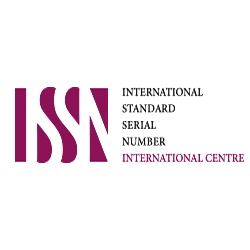
Reviewers play a pivotal role in scholarly publishing. The peer review system exists to validate academic work, helps to improve the quality of published research, and increases networking possibilities within research communities. Despite some limitations, peer review is still the only widely accepted method for research validation.
Scientific Steps International Publishing Services (SSG) relies on the peer review process to uphold the quality and validity of individual articles and the journals that publish them.

Peer review comes in different flavours. Each model has its own advantages and disadvantages, and often one type of review will be preferred by a subject community. Before submitting or reviewing a paper, you must therefore check which type is employed by the journal so you are aware of the respective rules. In case of questions regarding the peer review model employed by the journal for which you have been invited to review, consult the journal’s homepage or contact the editorial office directly.
In this type of review, the names of the reviewers are hidden from the author. This is the traditional method of reviewing and is the most common type by far. Points to consider regarding single anonymized review include:
Reviewer anonymity allows for impartial decisions, as the reviewers will not be influenced by potential criticism from the authors.
Authors may be concerned that reviewers in their field could delay publication, giving the reviewers a chance to publish first.
Both the reviewer and the author are anonymous in this model. Some advantages of this model are listed below.
Author anonymity limits reviewer bias, such as on author’s gender, country of origin, academic status, or previous publication history.
Articles written by prestigious or renowned authors are considered based on the content of their papers, rather than their reputation.
But bear in mind that despite the above, reviewers can often identify the author through their writing style, subject matter, or self-citation – it is exceedingly difficult to guarantee total author anonymity. More information for authors can be found in the double-Anonymized Peer Review Guidelines paragraph.
With triple anonymized review, the reviewers’ identity is not made visible to the author; likewise, the author identity is not made visible to the reviewer, and neither the reviewer nor author identity is made visible to the decision-making editor (which is not the same as the handling editor). The handling editor, responsible for choosing and inviting reviewers, does have visibility of the author and the reviewer identities. However, it should be noted that:
The complexities involved with anonymizing articles/authors to this level are considerable.
Open peer review is an umbrella term for many different models aiming at greater transparency during and after the peer review process. The most common definition of open review is when both the reviewer and author are known to each other during the peer review process. Other types of open peer review consist of:
Publication of reviewers’ names on the article page
Publication of peer review reports alongside the article, either signed or anonymous
Publication of peer review reports (signed or anonymous) with authors’ and editors’ responses alongside the article
Publication of the paper after pre-checks and opening a discussion forum to the community who can then comment (named or anonymous) on the article.
For journals that use double anonymized peer review, the identities of both reviewers and authors are unknown each other throughout the review. To facilitate this, authors must ensure that their manuscripts are prepared in such a way that they do not reveal their identities to reviewers, either directly or indirectly.
Please therefore ensure that the following items are present in your submission and are provided as separate files:
The title page will remain separate from the manuscript throughout the peer review process and will not be sent to the reviewers. It should include:
The manuscript title
All authors’ names and affiliations
A complete address for the corresponding author, including an e-mail address
Acknowledgements
Conflict of interest statement
Please remove any identifying information, such as authors’ names or affiliations, from your manuscript before submission.
Along with removing names and affiliations under the title within the manuscript, other steps need to be taken to ensure the manuscript is correctly prepared for double anonymized peer review. The key points are:
Use third person to refer to work the authors have previously published. For example, write “Black and Hart (2015) have demonstrated” rather than “we/the authors have previously demonstrated (Black & Hart, 2015)”.
Make sure that figures and tables do not contain any reference to author affiliations.
Exclude acknowledgements and any references to funding sources. Use the title page, which is not sent to reviewers, to detail these and to declare any potential conflicts of interest to the editor.
Choose file names with care, and ensure that the file’s “properties” are also anonymised. If you are using Microsoft Office 2007 or later, consider using the Document Inspector Tool prior to submission.
Take care to ensure that you do not inadvertently upload identifying information within any of the files that will be shared with reviewers.
SSG Journals employs a three-stage review process – editorial office, external review and editors’ decision.
The first stage of the review process takes place in the editorial office. On submission, a manuscript is reviewed to ensure that it meets the minimum requirements of the journal before it is sent to external reviewers. At this stage, the manuscript is reviewed for the following.
• Possible plagiarism: The manuscript is evaluated to compare the level of similarity with other published works. SSG Journals uses Turnitin plagiarism detection system to achieve this goal. Manuscripts that have high level of similarity (>20%) with other works (including the author(s) previous works) are rejected at this stage. Authors are provided with the similarity report together with the decision to reject the manuscript.
• Scope: After a manuscript has undergone similarity check and the level of similarity is judged to be appropriate, the content of the manuscript is checked to ensure that it fits within the scope of the journal selected by the author(s). In situations where the content of the manuscript does not fit the scope of the journal, the author’s consent is sought for the manuscript to be transferred to a more suitable journal. A transferred manuscript does not automatically translate to an accepted manuscript in the receiving journal. The manuscript still undergoes the usual peer review and may be accepted or reject if it is not suitable.
• Recent references: Academic Journals encourage authors to cite more recent articles. Preferably, considerable number of the cited articles should be works that were published within the last five years. This is especially important for articles submitted to journals in the life sciences.
• English Language: Academic Journals currently publishes full text of articles only in English language.
• Manuscripts are checked for the structure, organization, correctness and clarity of the language as it adheres to the journal’s Instructions for Authors. The editorial office usually makes correction to minor grammatical errors in such a manner that it does not alter the manuscript. However, in situations where language is substantially difficult to comprehend, the manuscript is returned to the author to improve clarity of the language.
Manuscripts that fails in this first stage of the review process are returned to the author(s) for modification and resubmission. This first stage of the review is very important as it enables the author(s) improve the manuscript at an early stage. This first stage of the manuscript review is usually completed within 3-5 days.
Once a manuscript successfully completes the editorial office review process, it proceeds to the second stage. The second stage of the review process employs the double-blind review system. Three external reviewers are selected from our database, editorial board of the journal or other sources. These reviewers have expert knowledge of the subject area of the manuscript. The reviewers are invited to review the manuscript by sending them the abstract of the manuscript. Upon acceptance to review the manuscript, the full text of the manuscript is sent to the reviewers after the author(s) have been concealed.
Reviewers are required to evaluate the manuscripts and provide useful comments to enable the author(s) improve the quality of the manuscript. Reviewers also score the manuscript in terms of originality, contribution to the field, technical quality, and clarity of presentation and depth of research. Finally, reviewers make one of the following suggestion about the manuscript;
• Requires minor corrections.
• Requires moderate revision.
• Requires major revision.
• Not suitable for further processing. In this case, the reviewer provides specific reason(s) why the manuscript not be further processed.
It should be noted that though a reviewer may give a positive report on a particular manuscript, if another reviewer raises concerns that may fundamentally undermine the study and results the manuscript may be rejected.
Upon receipt of the reviewers’ comments, the editorial office reviews the comment. All reviewers’ comments are thereafter sent to the author(s). The reviewers’ identities are concealed from the author(s). The total time taken to complete the second stage of the manuscript review dependent on the availability of the reviewers. However, it is usually completed between 2-3 weeks.
Using the reviewers’ comments, author(s) make corrections to the manuscript and submits a revised manuscript. Upon receipt of the revised submission, the manuscript undergoes the third and final stage of the review process. The original manuscript, the revised manuscript and all the reviewers’ comments are sent to an editor of the journal. The editor reviews the manuscript and makes one the following decisions.
• Accept as it is.
• Accept with minor correction.
• Requires major corrections.
• Send revised manuscript for review again.
• Reject.
Manuscripts that are accepted as it is are scheduled for publication. Manuscripts that require corrections (either minor or major) are sent to the author(s) to affect the corrections suggested by the editor. After effecting the corrections, the editor reviews the manuscripts again before the manuscripts are accepted for publication. In some cases, the editor may require authors to make corrections a second time. In other cases, the editor may request for the revised manuscripts with (or without) the additional corrections to be sent to a specific reviewer who had earlier reviewed the manuscript before the manuscript can be accepted for publication.




An independent academic publisher with an editorial team including many of the top researchers in the world. SSG publishes research, review, and case report articles in double-blind, peer-reviewed, open access scientific and academic journals.
Copyright © 2025 Scientific Steps International Publishing Services LLC (Dubai – United Arab Emirates)